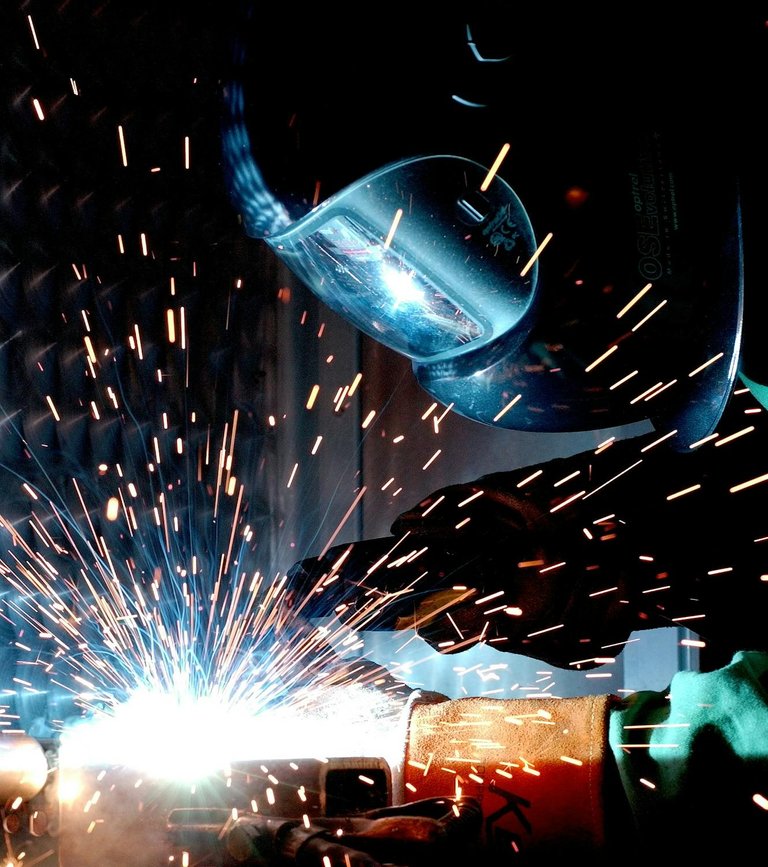Why Do We Make More Steel When We Can Recycle Scrap? - Creating Awareness
Hi there everyone, this may be my first post on StemSocial community and as a business enthusiast I believe there are a lot connections between Science and Business.
Some of the questions that may seem like science questions actually have business based answers. A classical example is the question of why we're making more new steal when we can just use the recycled scraps we get from damaged products that once used steal, like for example vehicles.
Humans invented steal thousands of years ago when they figured out that mixing iron with carbon made a much stronger material.
Steel became a very important material for making weapons of war in the medieval times like very strong swords or spears or even shields.
The strongest of armies wore solid steel armor as protection
In today's world, there are more than three thousand different types of steel with other elements mixed in for different uses.
Steel is considered as one of the most recycled materials on earth right now.
It completely beats out plastic, glass and copper. If you're thinking that plastics are recycled a lot, well check out how many times steel gets recycled to make new products.
More than half of the steel we have already used to manufacture stuff gets melted down and reused over and over again.
At the moment, about a third of the steel made around the world each year comes from scrap but nearly all the rest is new steel created from iron ore.
It's no secret that recycling is much better for the planet and is usually cheaper so the main question is why are we still making so much of it from scratch if recycling is clearly a better option.
Well that's the main reason for my blog. You may be thinking since that's a science question it probably requires a scientific answer but it's actually a business answer.
The reason why we're still making more steal from scratch rather than relying fully on recycling which is healthier for our environment is because the world still needs more steel than scraps can provide.
Based on the amount of work being done with steel right now, the amount of steel we can get from recycling old scrap materials is not enough to do that work.
In just 2020 the steel manufacturing industries turned out almost two billion metric tons of steel.
About half of that steel went into buildings and bridges that obviously won't become scrap for a very long time.
So the answer is that more of the new steel goes into structures that won't turn into scrap for a very long time and so we have less scrap and even more demand for the use of steel.
I hope this answers the question very well. Thanks for stopping by. I also hope these insights help you under the state of our world and why certain solutions can not be executed at the moment.
I believe we need very new methods of manufacturing that will make us rely more on recycling than getting new and raw materials. Recycling will certainly help save the planet.
This is more of an awareness blog about the benefits and value of recycling. Thanks for having me fellow science enthusiasts. I remain the businessguy, have a nice day folks.

Hi. These are very interesting fun facts. Is this your specialty? How can we double check it and how can we get to know you better?
Well friend business is my specialty but I've realized that science has a depp connection with business and wanted to share. If you need any information from me it will be a pleasure dear friend.
I'm new on HIVE but old in the world of business. I'm a business enthusiast
Sure! Do you have an introduction post?
BTW, usually it's easier for experts to make assertions and take their word for granted. Otherwise, it is important back up our claims with adequate sources, you know. It's a suggestion for future STEM posts.
Sure friend, I'll do my intro post. I'm very experienced in business and science though. Most or all the information is from me. 🥰 Thanks for the support
Magnetic steel and iron get recycled because one can easily pull it from the waste stream with a magnet. I suspect that non-magnetic steel faces the same problem as other metals.
Steel items tend to last longer than plastic. I cook every day with a cast iron skillet that was formed in the 1940s. I suspect that it could be used for several centuries.
In most cases the iron in structures will last as long as the structure.
Sadly, rebar is often problematic. Structures fail when the rebar used to reinforce the structure gets exposed to the elements.
!WINE
Posted using STEMGeeks
There are lots of things that do not just break down after being used, thus steel or iron i mean, some goes into projects that ought to last for years or even centuries and so if we do not keep producing new ones, new projects would come to a halt basically....
Indeed 🥰👍